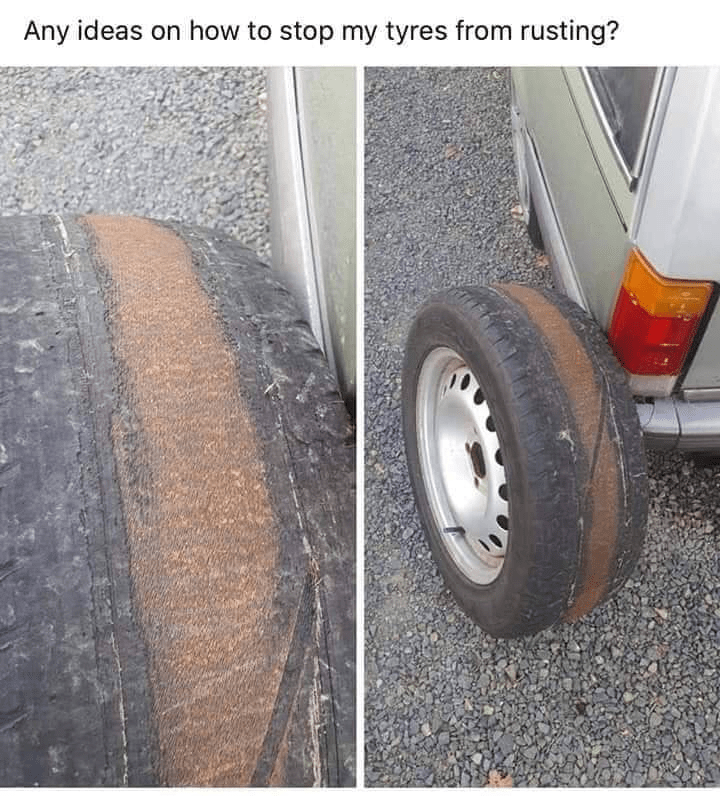Share
Dry rot is when the rubber in tires loses its moisture and becomes tough and brittle. Due to their lost elasticity, tires that have developed dry rot past a certain point need to be replaced as they are prone to blowing out while being driven on.
Dry rotting is more prevalent in tires that are stationary for a period of three months or more. This is because tires are kept moist by resins and oils within the rubber; these oils need downward pressure to be activated, and such pressure comes from coming into regular weighted contact with the road during driving. If your tires aren’t being driven on, then they lack this protection against moisture loss.
Although keeping tires in storage (either on their own or attached to a vehicle) can increase their chances of developing dry rot, there are a lot of precautions that you can take to ensure that your tires suffer minimal deterioration while in storage. The following will explain how to keep stored tires in top condition.
UV causes the oils and resins that keep tires moist to degrade and eventually leech out of the surface of the tire. Therefore, if tires are frequently kept in direct sunlight, they are far more likely to suffer from dry rotting.
In our guide to preparing a car for long-term storage, we spoke about the importance of keeping your car under a weatherproof cover while being stored. If you ensure that this weatherproof cover is long enough to cover your tires, then they should be protected from UV rays as well as from dust and debris. This is why covering your car is extra important if you are keeping your car in a storage space that lets light in.
Tires that are muddy are more prone to dry rotting. This is because as the moisture in mud evaporates off the surface of the tire, it lifts out some of the oils that help keep the rubber moist (its the same reason why licking your lips regularly can make dried, chapped lips worse).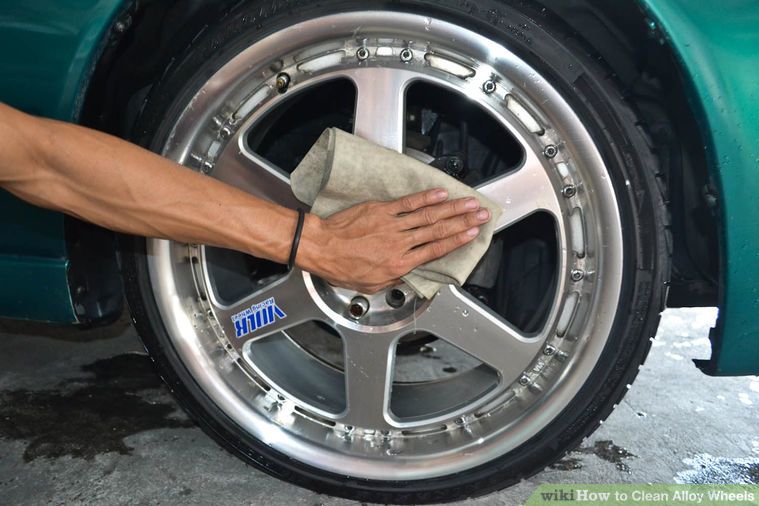
You should therefore clean any dirt or mud off the surface of your tires before you put your vehicle into long-term storage. The best way to clean tires is with warm water and a small amount of either hand soap or kitchen detergent. Do not use any specialist tire cleaning products. These are often petroleum based and are designed to be “rubbed in” to the tires as they are driven on. If the tires are not being driven on immediately after the application of these cleaning products then this can make the tire dry out even faster.
Temperatures that are above 68 Farenheit and below 45 Farenheit can speed up the dry rotting of tires. Similarly, regular rapid swings in temperatures (anything over 15 Fahrenheit in a couple of hours) can lead to dry rotting as it speeds up evaporation from the tire.
If possible, you want to store your vehicle in a space that is climate controlled, and where the temperature is slightly cooler than standard room temperature (55-59 Fahrenheit is ideal). If you can keep your car in a storage facility that has humidity control as well as temperature control, then that is even more of a bonus, as excessively dry environments can accelerate tire degredation.
If you can keep your car in a storage facility that has humidity control as well as temperature control, then that is even more of a bonus, as excessively dry environments can accelerate tire degredation.
Dry rotted tires can be restored to the point where they can be driven on again, but only if the dry rotting has not lead to cracks in the sidewall of the tire. These cracks in the sidewall are more likely to occur if the tire is holding up the weight of a stationary vehicle while in storage.
Therefore, if you are storing your vehicle for more than three months, and have no plans on driving that vehicle during that time, you should consider removing your tires from the car. Ideally, you want to remove the tire from the wheel entirely, as even the stretching of the rubber around the rim of a tire can make cracks in the sidewall more likely to occur.
Vehicles without tires can be mounted on hydraulic jack stands. If this is not possible, then it may be worth buying a pair of cheaper second hand tires to have on your car while it is being stored. Just try to keep driving on these tires to a minimum – they are just a stop gap to prevent damage to your existing tires.
If this is not possible, then it may be worth buying a pair of cheaper second hand tires to have on your car while it is being stored. Just try to keep driving on these tires to a minimum – they are just a stop gap to prevent damage to your existing tires.
If you decide to remove tires from your car, or you are storing spare tires, then its best to keep them in airtight (or as airtight as possible) bags while they are in storage. Oxygen is a contributor to dry rotting (this is why a degree of dry rotting occurs in all tires) so keeping tires in airtight bags can help reduce the speed at which dry rotting occurs.
There are several options to how you can store tires in airtight conditions. Specialist tire bags are available, and these can come in custom sizes to match the size of your tires. You can also use vacuum sealed bags, although the majority of these available at homeware stores will not be large enough to store a tire in.
Storing your tires in bags (even if they are not airtight) will go a long way to preventing dry rot compared to storing them unbagged. Buying a bunch of large industrial platic bags and taping up the open ends with electrical tape is a cost effective way of keeping loose tires stored in a way that protects them from dry rotting.
Buying a bunch of large industrial platic bags and taping up the open ends with electrical tape is a cost effective way of keeping loose tires stored in a way that protects them from dry rotting.
If you want to store a vehicle, a great place to do this is our car storage spaces in Belleville. Save precious garage space at home while keeping your car protected behind fencing, 24-hour video surveillance, and other security measures. To snag storage for your car today, simply call or rent online today!
This article was written by Mike Skoropad. Mike is the CEO of Utires, an online tire retailer headquartered in Chicago.
Share
Your car tire tread is the one part of your car which faces a lot of pressure from constant contact with the road.![]()
As the number of miles that you log goes up, the degree of wear of your tire tread also increases.
However, the tire tread compound is also influenced by other factors such as road conditions, seasons, and temperature. And we know how hot a Phoenix summer is!
Although tires undergo stringent quality tests, the life of your tire is not finite, and they can sustain damage in different forms.
So, while normal wear and tear is expected, sometimes tire wear can happen prematurely. One of the most common factors for this happening is dry rot.
Dry rot refers to a type of tire decay which can occur in aged tires and is quite common. Tire dry rot can also happen if the tire is regularly exposed to harmful substances such as certain types of petroleum-based tire cleaners as well as due to environmental conditions.
Tires with dry rot damage can suffer from leaks and holes, as well as blow-outs or in extreme cases, the tread can separate from the tire completely!
What is tire dry rot?
Do your tires sport little cracks that run along the sidewall and up to the tread? If yes, then it could be because of tire dry rot.
Dry rot occurs when the rubber of the tires becomes brittle and hard. With time, the oil present in the rubber dries up and the chemical bonds start to break down – something that can happen in used tires.
Tires with a manufacturing date that goes back several years can start to unwarp. This of course happens regardless of whether the tires have been in use or not.
Other reasons that can lead to dry rot of tires include – high mileage, low tire inflation, improper storage, and constant exposure to a heat source.
Exposure to the sun is a common cause for dry rot of tires; this is something that you need to watch out for if you live in Phoenix, Arizona or any place which has a hot desert climate as already indicated. If left exposed too long, the deterioration rate of your tires increases.
How long can tires remain unaffected by dry rot?
Is there a specific timeframe within which dry rot sets in? Well, we cannot provide an accurate or specific timeframe – it mostly depends on the above-mentioned factors.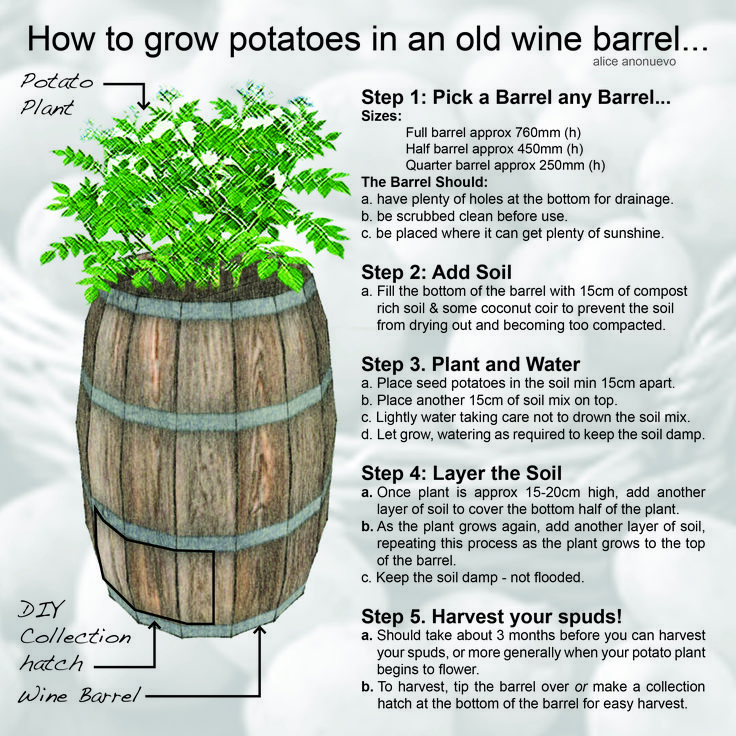 These factors primarily determine how much mileage you will be able to extract out of your car tires.
These factors primarily determine how much mileage you will be able to extract out of your car tires.
Having said that, most car technicians will tell you that the cut-off point for any brand of tires is around ten years.
Beyond ten years, the structural integrity of your tires, even if they don’t display any damage from dry rot, will start to weaken.
The tire tread compound of tires that are more than ten years old in most cases would have expired or at the very least, the tread compound would have lost its effectiveness.
4 Ways You can Prevent Tire Dry Rot
Lack of use is another common reason for tire dry rot. So, if you are not going to be using your car for an extended period of time, do the following:

Note – Checking tire pressure at least once a month and maintaining tire inflation are two steps that should be undertaken as part of routine maintenance.
Can tire dry rot be repaired?
Driving your car with damaged tires is not something we or any other professional car technician or service will recommend. If dry rot damage is minor, the damage can be fixed with a tire sealant – but this is a job that should be best left to a professional car technician.
If, however, you find that the tire dry rot has reached an advanced stage, it is best to simply replace the tires.
It is not safe to drive your vehicle if the tires are damaged due to dry rot – when the tires run, they generate heat which causes the rubber to expand.
If, however, the integrity of the tires is damaged, then the tire can fall apart while you are driving.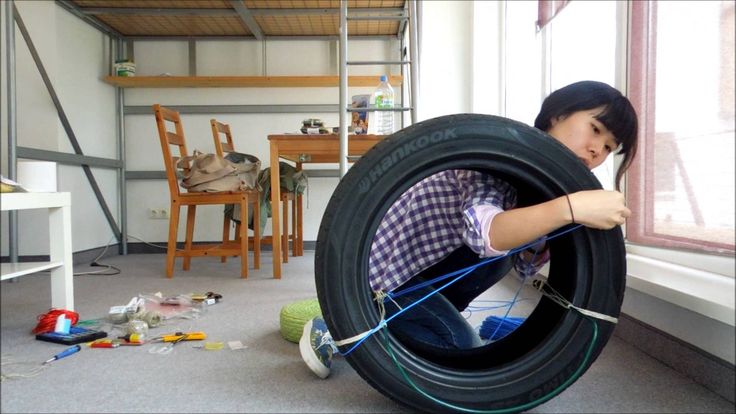
Reliable car maintenance with professional auto experts!
If you are looking for professional and credible car repair service for your car, give Virginia Auto Service a call today at 602-266-0200 or schedule a visit with us online.
LADA
UAZ
KIA
Hyundai
Renault
Toyota
Volkswagen
MW
BMW
Nissan
BM
Mitsubishi
Mazda
Ford
All brands
partner material
Soon you will change summer tires to winter ones (or have you already?). Do you remember how to store them properly? Let's add one life hack to the main rules, that is, a trick, if you like this word more.
This autumn pleased us with warmth for a long time, as if in compensation for the “missed” summer. But soon summer tires will still go to "wintering" - whether it's a garage, a basement, a balcony. Some will opt for seasonal tire storage. They do not need to be reminded of the storage rules, specially trained responsible people will remember them, although ... Let us list, in general, a few simple rules.
Some will opt for seasonal tire storage. They do not need to be reminded of the storage rules, specially trained responsible people will remember them, although ... Let us list, in general, a few simple rules.
1. Tires or complete wheels (tyres on rims) must be stored in a dry, well-ventilated area. Preferably dark, so that direct sunlight does not fall on the rubber and it does not crack. So a balcony is not suitable for this business, as well as a heated loggia.
2. Tires without rims should be stored in an upright position, pressed tightly against each other, and nothing should be placed on top so that they do not deform. For the same purpose, tires need to be turned up to three times a month - it resembles the process of caring for wine. Interestingly, do all seasonal storage warehouses know and comply with this requirement?
3. Tires on rims can be stored lying down in a stack. But it is also desirable to “shuffle” them at least once a month, at the same time checking the pressure. Reduced indicates tire leaks or a violation of the geometry of the rim. Do it while there is time.
Reduced indicates tire leaks or a violation of the geometry of the rim. Do it while there is time.
It is even better not to fold the wheels, but hang them up so that they do not touch surfaces (ceiling, walls).
4. Tires (or complete wheels) must be washed and dried before being stored. It is impossible to put wet tires in plastic bags - moisture will practically not evaporate, which will damage the rubber.
One more point can be added to this well-known list - something like the simplest life hack: before wintering, treat the tires with tire ink. Surprised? After all, it is believed that "ink" is used for aesthetic purposes: to remove stubborn dust from rubber, to add depth of color and shine to the sidewalls. In general, pampering for those who are concerned about the appearance of the "car", or dealers who are trying to throw dust in their eyes. All this is true, but not quite. Remember why you clean your shoes. Not only for shine, but also protection from water and dirt.
Not only for shine, but also protection from water and dirt.
You've seen very old tires. What catches your eye? - craquelure on the sidewalls. Craquelures in the original sense are cracks in the paint layer and varnish in the paintings of old masters. Even the Mona Lisa has them. But it is unlikely to help her, but tires can.
Good blackeners, in addition to being decorative, also have a protective function, creating a film on the surface of the tire that protects the rubber from drying out and cracking. But for this you need to choose compounds based on silicone. For example, ASTROhim has one of these, it stays on the surface for a long time even with daily use of the car, which means it will protect tires during storage.
Why silicone?
Silicone ink fills microcracks that inevitably appear on tires, and grow over time - especially in an unfavorable environment (when operating on bad roads, in southern or, conversely, northern regions, under load, at the wrong pressure). The use of ink is simple: I sprayed it with a spray or aerosol from a distance of 20-30 cm, and that's it. It will take several minutes to process a set of wheels.
The use of ink is simple: I sprayed it with a spray or aerosol from a distance of 20-30 cm, and that's it. It will take several minutes to process a set of wheels.
Of course, the ink will not make the tires last forever, but, perhaps, for a season, or even two, they will extend their service life.
Rubber craquelure: how not to turn tires into an old picture
Rubber crackles: how not to turn tires into an old picture
Rubber crackles: how not to turn tires into an old picture
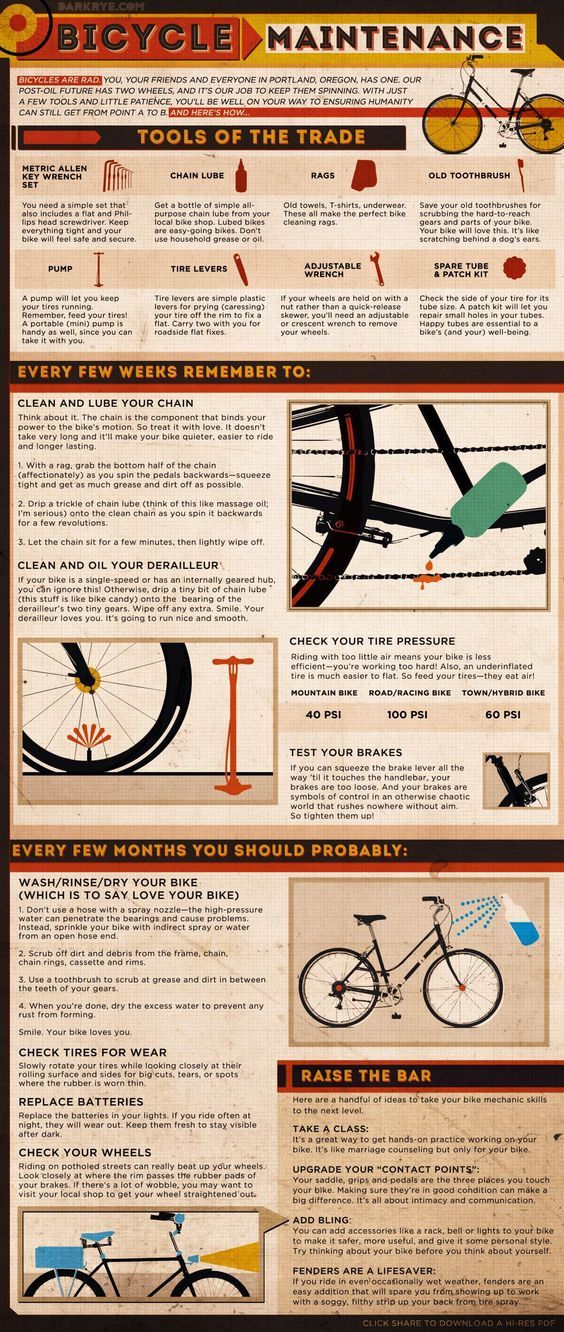
Rubber craquelure: how not to turn tires into an old painting
Our new video
These 5 things should be in your car in winter. Do you have them?
The most coveted Volga: 7 seats and a TV inside
Kangaroo test: our assembly, Chinese essence, Largus price
Like this note? Subscribe and you will always be in the know!
Driving on Yandex.Zen
News smi2.ru
Few car owners think about the conditions under which tires should be stored after changing shoes. Meanwhile, improper maintenance of tires can not only shorten their service life, but also affect driving safety in a far from good way.
Vyacheslav Vasilenko
And all because the tire tends to lose its frictional qualities. Yes, yes, do not be surprised - even from what just lies in the garage or on the balcony. Hence the violation of the braking characteristics, and the lack of information content of the steering wheel, and the deviation from the trajectory. Therefore, if you are not indifferent to your own fate and the fate of others, it is still better to take care of proper tire preservation. For which it is not difficult to follow a few elementary rules.
Hence the violation of the braking characteristics, and the lack of information content of the steering wheel, and the deviation from the trajectory. Therefore, if you are not indifferent to your own fate and the fate of others, it is still better to take care of proper tire preservation. For which it is not difficult to follow a few elementary rules.
Many motorists are accustomed to stacking tires on top of each other, which is absolutely wrong, because under the weight of the rims that are below, they can be deformed. Of course, they will not become smaller in diameter, but there is a high probability that they will be covered with subtle cracks and other flaws. And if the rubber layer already has, even the most minor damage, say, microfractures or the primary rudiments of a hernia, under load, the process of its destruction will accelerate significantly. In certified technical centers and wholesale sites of tire companies, tires are folded in a strictly vertical position.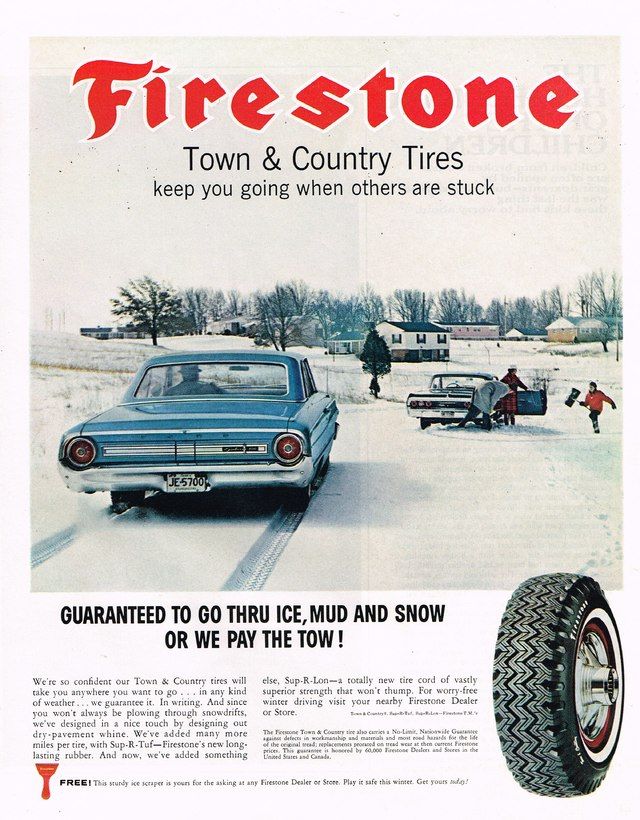 This is the only correct way to store them optimally.
This is the only correct way to store them optimally.
But we must not forget that the surface must be absolutely flat, so as not to subject the tires to uneven loading. If you have wheels assembled with rims, it would be ideal to hang them on hooks parallel to the wall. Or at worst, place them horizontally, but each separately. True, in this case, at least once every two months, the wheels must be turned over, which is confirmed by the relevant requirements of GOST No. 24779-81. This is done in order to equalize the internal pressure in the rubber, thereby minimizing the risk of deformation.
419551
If we talk about winter tires, then everything is simple with them. Before launching products into production, the developers test the composition of the rubber compound for frost resistance, identifying the temperature that is critical for the loss of performance. Therefore, with moderate drops, nothing will happen to such tires. But with summer tires the situation is more complicated. As a rule, none of the models is able to fully maintain its operational properties at rates below the 25-degree mark. So storing wheels on a balcony or in an unheated garage can fundamentally affect consumer qualities. The reason for this is the appearance of microcracks, which later can lead to partial destruction of the rim. That is why tire shops often resort to the use of heaters or fold the tires near the batteries. But in order to exclude possible temperature fluctuations, experts do not recommend storing tires at a distance closer than 1 meter to a heat source.
As a rule, none of the models is able to fully maintain its operational properties at rates below the 25-degree mark. So storing wheels on a balcony or in an unheated garage can fundamentally affect consumer qualities. The reason for this is the appearance of microcracks, which later can lead to partial destruction of the rim. That is why tire shops often resort to the use of heaters or fold the tires near the batteries. But in order to exclude possible temperature fluctuations, experts do not recommend storing tires at a distance closer than 1 meter to a heat source.
The fact that rubber must be thoroughly washed and dried before preservation is not even discussed. Firstly, adhering dirt causes premature aging of the tire surface, and secondly, getting into the tread, it hardens over time, contributing to the expansion of the grooves. Outwardly, such trifles, of course, are not noticeable, but they still affect performance. For example, when crossing a puddle, one of the wheels may show excessive slip. Small pebbles that get stuck in the pores of the tire have similar detrimental properties - gravel and other foreign objects must be disposed of. To preserve the resource capacity of tires, they should not be stored in rooms with an excessive level of humidity. Among other things, tires must be protected from direct sunlight, which causes drying out and, as a result, the appearance of splits and cracks.
Small pebbles that get stuck in the pores of the tire have similar detrimental properties - gravel and other foreign objects must be disposed of. To preserve the resource capacity of tires, they should not be stored in rooms with an excessive level of humidity. Among other things, tires must be protected from direct sunlight, which causes drying out and, as a result, the appearance of splits and cracks.
Despite the fact that auto shops and tire shops sell plastic bags that supposedly protect tires best, they are not recommended. The fact is that polyethylene, by definition, almost does not let air through, which means that condensate will accumulate under their shell, slowly but surely destroying the rubber compound. The best solution is to wrap the wheels in covers made of special non-woven materials that are sold at branded tire stores, service centers and on the Internet. It is not for nothing that such a storage method was chosen by the "techies" from the Formula-1 team garages.